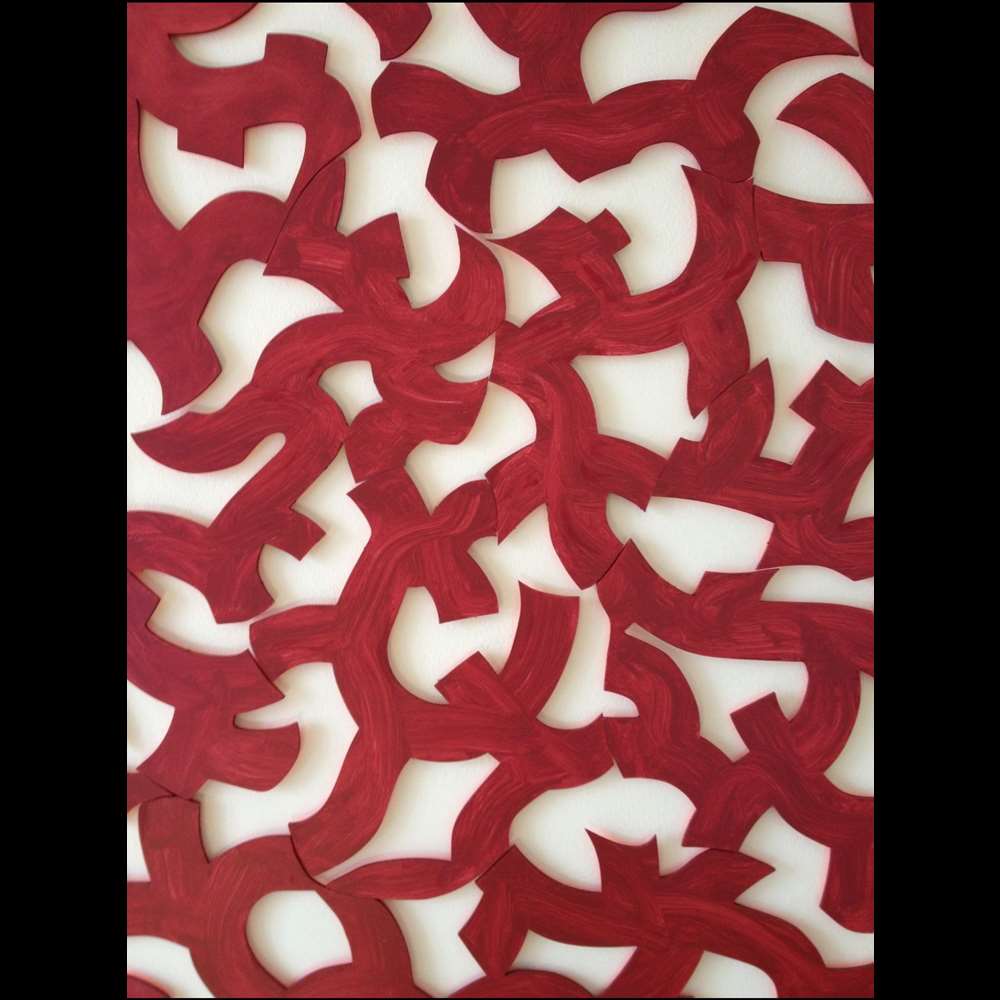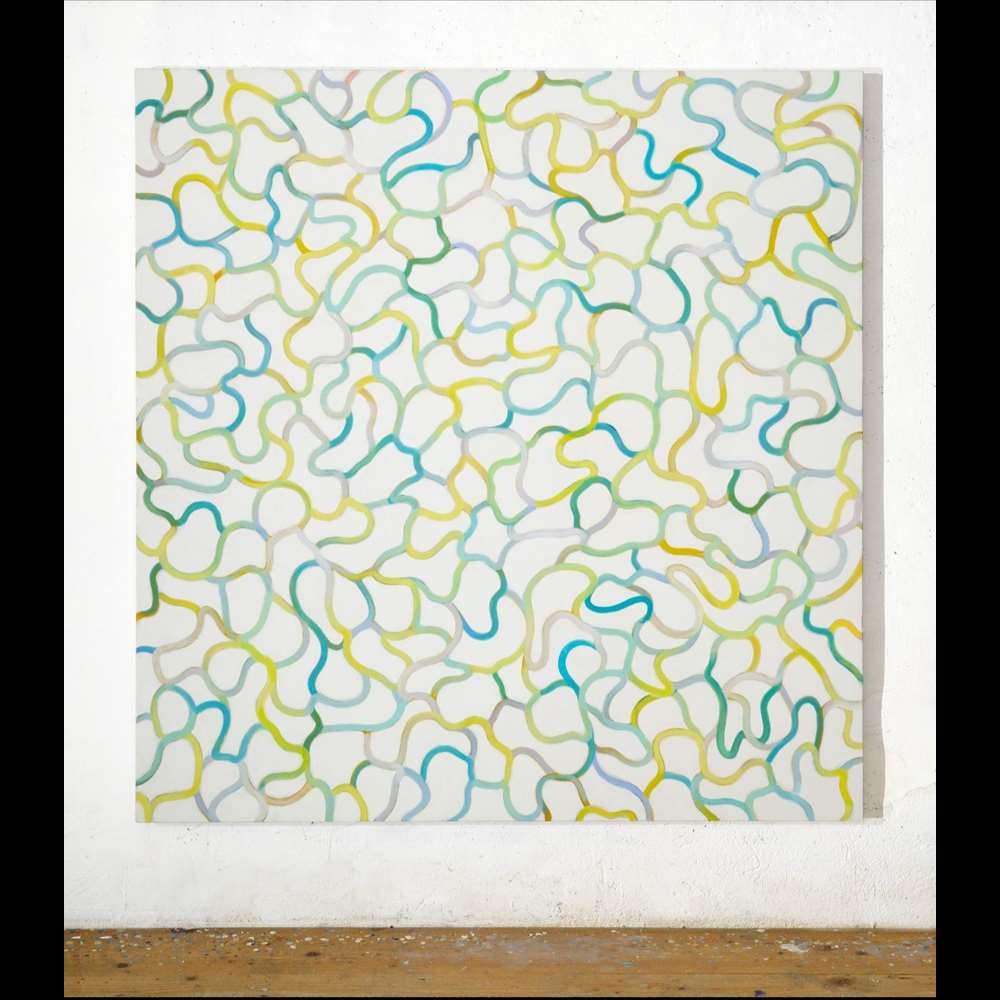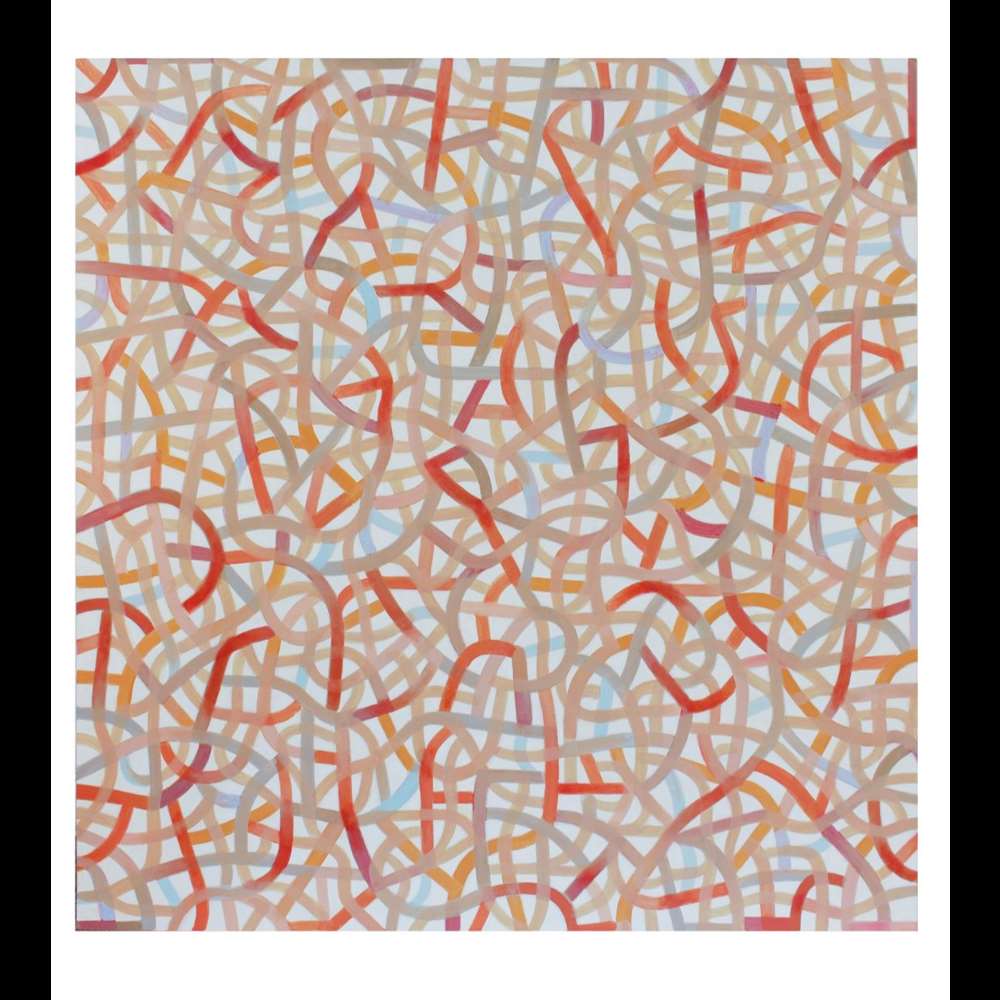My desire is to create a work that 'exists': this means that it must have the qualities to involve the gaze, a gaze that is body. That is, a work that is perceptually active in its aniconicity. I favor the classic Apollonian polarity of a distant gaze, a polarity that does not forget the Dionysian strength of the image. Finally, I tend to create a 'presence' that can always be changeable to the gaze and yet always exist in its fixity.
Rothko and Pollock for the radical nature of their attention to color and sign respectively, a physical and phenomenological, Dionysian radical nature. Fontana, since I find myself in the same European area, with the possibility of the consciousness of form, of the concept of 'form', here in Europe different from the Anglo-Saxon area, which has allowed me to follow a different, Apollonian radicality.
Define yourself as a human being using three adjectives.
Positive, energetic, thoughtful.
In your vision, where is contemporary art going and where would you like it to go?
Contemporary art is subject to the structure of society, a structure mainly defined by the sale of the asset, therefore by the economic value, a value attributed above all to the market. In some respects this statement denotes an invariant over time: and so it is. But time has redefined the weight and meaning of the market, since today's society is globalized and 'communicated' like never before. This has a reflection on the value of the work, a value that is now defined above all by the economic value, influencing the form of the work, making it increasingly synergistic with the world of communication, which, to be effective, must be immediately recognisable. Understandably, all those values that are slower to release - one might say - human, which require time, habit, reflection, are compressed.
Paolo Iacchetti was born in 1953 in Milan where he actually lives and works.
With his scientific background (Chemistry degree in 1976), he graduated at Accademia di Brera in 1982.
In 1983 he starts to exhibit mostly in Italy, Switzerland and Germany.
He taught at the “Scuola Politecnica di Design” in Milan and now at the “Università Cattolica” of Milan.
His work develops starting from the primary expressive elements: line and color. It ideally continues the lineage and experience of painting that goes from Rothko to Pollock, from Jasper Johns to Brice Marden and is unrelated to Minimalism and the obliteration of form that occurred in the sixties.
Based on these essential elements, I proceed through a process of constructing relationships. These relationships eventually form an image capable of continuously activating our perception, induced by sensations generated by the vision of the image produced.
If the beauty in the classical was defined as unity, proportion (measure) and efficient clarity (relationships that are directly sensations – for example classical Greek sculptures), now there is a need of new criteria that include the antique relationships of the beautiful, yet renew the category.
Therefore: to remain in relationship with the painting through the gaze signifies experiencing the search of the stable relationships within what one sees.
(a gaze from afar involves the mind, yet at the same time, although we are unaware of it, it involves the body too, since it is a sensation)
Lines end colors constitute these finite relationships; yet they are continually new to the sight reflecting a new measure. In this new measure of relationship between image and scheme of the brain, we can establish the beautiful.
The category of beautiful can thus find a base, after the parenthesis of the romantic sublime, with its infinite indefiniteness and the related indifference of form in Duchampian sense.
The beautiful requires a form that relates to the individual through a connection that does not weaken but rather thickens, enriches and conquers our attention.
The beautiful, therefore, as a form that continuously responds, based of a contemporary humanism that is open to infinite possibilities, but with measure as it’s essence.
The choice of the connection with the work is for a relationship “at distance”, apollonian.
We could say that the work pursues an internal logic and dynamics of painting based on an unpredictable grid, structured on minimal color variations, with the scope of stimulating a series of sensations susceptible to incessant, unexpected and variable perceptive adjustments.
The work thus relates, in it’s concrete plasticity, directly with the abstract schemes of our brain.
It’s richness of form and color relates to our sensation following a new proposition for the beautiful.




